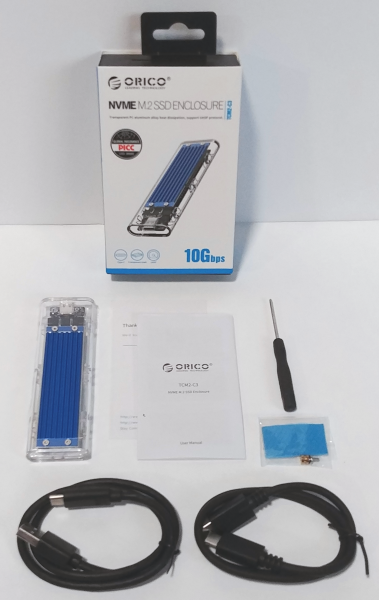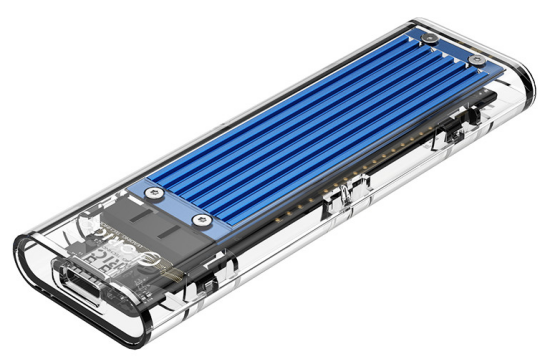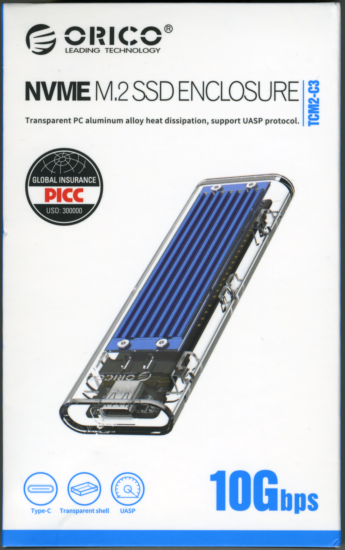Packaging:
Orico's transparent NVMe enclosure comes in a small blue and white box. Along with a picture of the enclosure, the front advertises many of its key features including its USB Type-C port, transparent shell, and its support for UASP. The back of the box provides a bit more information regarding the enclosure's features and specifications.

Inside the box you'll find the enclosure as well as a USB-C to A cable, USB-C to C cable, a couple of silicone thermal pads, a mounting screw, mini screwdriver and a small user manual.
Physical Features:
While not nearly as small as a USB flash drive, the Orico's transparent enclosure is compact and light enough to fit in your pocket or purse. The enclosure measures 108 x 34 x 11.5 mm and tips the scales at a mere 39g without an SSD in it.
The enclosure's shell is made almost entirely out of transparent plastic. This not only protects your SSD, it makes it easy to identify the drive inside. The enclosure also has an aluminum heat sink along one of the sides. Available in a variety of colors, this finned heatsink works to dissipate heat away from your drive. I do need to point out that this heatsink can get quite warm. With Samsung's 970 EVO SSD, temperatures averaged around 110°F at idle but jumped to 138°F under heavy loads.
On one end of the enclosure, you can see its USB 3.1 Gen 2 interface. In addition to offering data transfer speeds up to 10Gbps, the interface provides power for the enclosure. On the other end, there is a small power/activity indicator, which lights up blue when the enclosure is powered on and blinks when data is being transferred.

Inside the enclosure, there is a small printed circuit board (PCB). On the top of the board, you'll find an M.2 slot as well as a series of holes that let you mount SSDs 80mm, 60mm, 42mm and 30mm in length. The PCB also has a number of doubled sided, copper strips that, like the heatsink, are designed to dissipate heat away from the drive.


On the bottom of the board, there is a series of chips. Most notable is JMicron's JMS583 controller chip which acts as a bridge between the USB host and PCIe storage device. In addition to providing Type-C connectivity, the JMS583 supports the TRIM command and complies with the specifications for both the USB Mass Storage Class Bulk-Only Transport (BOT) and USB Attached SCSI Protocol (UASP).





